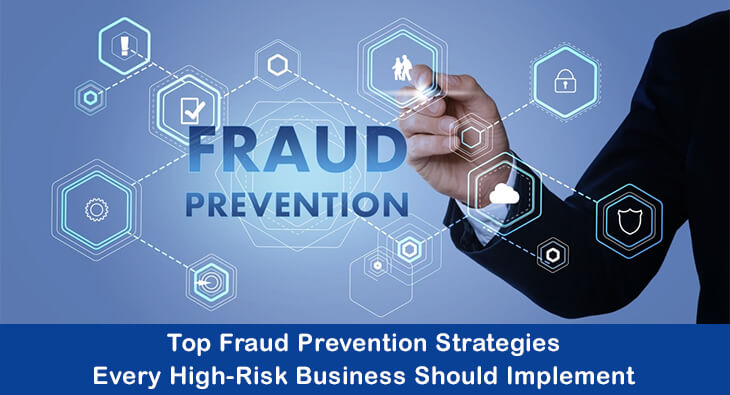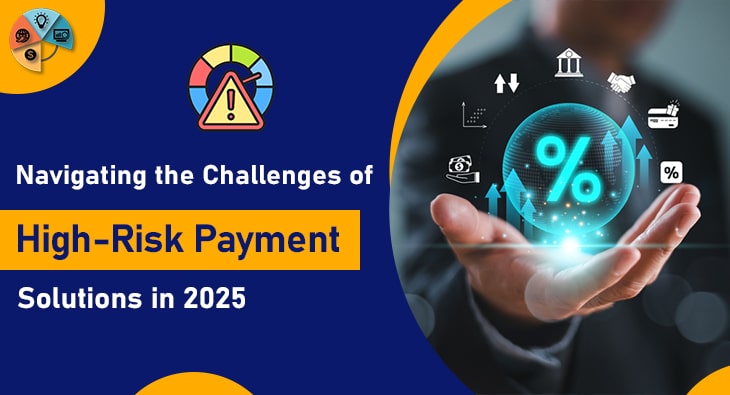Fraud is a growing threat that can cripple any business. But for high-risk businesses, the stakes are even higher. With the potential for large financial losses and damage to reputation. It is crucial for high-risk businesses to prioritize fraud prevention strategies.
By implementing effective measures, these businesses can protect themselves and their customers from fraudulent activities, ensuring long-term success and stability.
In this blog post, we will discuss the top fraud prevention strategies that every high-risk business should implement to secure their success.
Understanding High-Risk Businesses and Their Vulnerabilities
High-risk businesses span a diverse range of industries such as online gambling, adult entertainment, cryptocurrency trading, and e-cigarettes, among others. These businesses carry a higher level of risk due to the nature of their operations, the markets they engage in, or the customers they serve.
They are characterized by aspects like high transaction volumes, global operations, and interactions that do not occur face-to-face. Such factors can unfortunately make them a fertile ground for fraudsters.
Therefore, understanding these vulnerabilities is paramount for these businesses. With a robust understanding, they can then invest effectively in strong fraud prevention mechanisms that are key to their security and overall success.
Some Related Blogs
- Choosing the Right High Risk Payment Gateway for Social Media Agency
- Differences Between Card Present and Card Not Present Transactions
- Small Business Success: Streamlining Payments with Payment Gateway
- The Advantages of Using Merchant Account for Your Travel Agency
The Importance of Strong Authentication Procedures
Establishing secure authentication protocols is a critical step towards protecting your high-risk business against fraudulent activities. The foundation of these protocols lies in implementing multi-factor authentication. This system operates by verifying the identity of a user through a combination of two or more independent credentials.
It could include something the user knows, such as a password, something the user has like a security token, or a unique identifier inherent to the user, such as biometric verification.
This multi-layered defense strategy significantly heightens the security level, making it challenging for unauthorized individuals to gain access or execute fraudulent transactions. Adopting a robust authentication procedure not only provides an essential line of defense but also fosters confidence among clients and stakeholders.
Role of Real-Time Transaction Monitoring
In the dynamic world of high-risk businesses, every transaction holds the potential for fraud. Real-time transaction monitoring serves as a proactive sentinel in this scenario.
It scrutinizes every transaction as it happens, pinpointing any anomalies that may indicate fraudulent activity. This could involve transactions of unusually high amounts, frequent transactions happening in quick succession, or those originating from locations known for high-risk activity.
This tool is like having an ever-watchful eye that sends immediate alerts when it spots anything suspicious, enabling businesses to promptly jump into action and minimize potential risks. Ultimately, real-time transaction monitoring equips businesses with the power to swiftly respond to threats as they surface, making it an invaluable weapon in their anti-fraud arsenal.
Need for Employee Training on Fraud Awareness
Your team is your first line of defense when it comes to fraud prevention. But without the proper training, they can unwittingly become a vulnerability.

By implementing a comprehensive fraud awareness program, employees can better understand their role in preventing fraud, recognize the telltale signs of common fraudulent activities, and know how to react when they suspect something isn’t quite right.
More importantly, it fosters an environment of honesty and accountability, deterring potential internal fraudsters.
This training is not a one-and-done deal – to stay ahead of evolving fraud tactics, it’s crucial to refresh and update this education regularly. Remember, a well-informed team is a safer, stronger team.
Implementing Fraud Risk Assessment and Management
The cornerstone of an effective fraud prevention strategy is a comprehensive fraud risk assessment and management approach. This method aims to illuminate potential fraud risks, evaluate their potential impact, and formulate strategies to mitigate them. To conduct a robust assessment, high-risk businesses need to cast a wide net, looking at both internal and external threats.
This includes everything from employee theft and supplier fraud to customer scams and cybercrimes. The subsequent management strategy shouldn’t solely focus on detection but also include strong measures for prevention and rapid response.
By examining all possible avenues of fraud and taking steps to manage them, businesses can significantly reduce their vulnerability to fraudulent activity. This not only safeguards their bottom line but also bolsters their reputation in the market.
Adopting Secure Payment Systems
For businesses at high risk of fraud, such as those conducting numerous online transactions, the choice of a payment system is vital. A secure payment platform must offer a robust set of features – strong encryption, tokenization, and SSL certificates – to ensure the protection of sensitive data during transactions.
The integrity of customer information is of utmost importance, and these features safeguard it from potential breaches. Equally critical is the system’s compatibility with fraud detection tools.
This integration facilitates real-time monitoring of transactions, alerting businesses to any suspicious activity instantaneously. By adopting a secure payment system, high-risk businesses enhance not only their financial security but also their reputation for taking customer data protection seriously.
![]()
Email us anytime!
Email customer service 24/7
![]()
Call us anytime!
Reach customer care 24/7 at +1 (727) 330-3944


